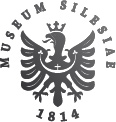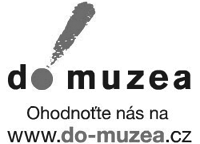ČASOPIS SZM SÉRIE B – VĚDY HISTORICKÉ
LXIV/1/2015
OBSAH/CONTENTS
STUDIE/STUDIES
Vratislav JANÁK – Petr RATAJ: Pravěká minulost Bruntálu a jeho horského okolí / Prehistoric past od Bruntál and the surrounding mountains
(s. 1-20)
Abstract
In terms of natural conditions the mountain part of the Bruntál district fundamentally differs from the North-
Eastern part – Krnov and Osoblaha regions. They are part of the traditional settlement area on the fertile soils
of the Upper Silesian loess, with characteristics similar to Central Europe regions - with a few exceptions – i.e.
continuity of a relatively dense settlement based on agriculture since the beginning of Neolith in the 6th millennium
BC until today. The wooded mountain surroundings of Bruntál are regions where continuous settlement
started much later, sometimes – as in this case – as late as in the High Middle Ages. If there was an earlier settlement,
it can be described as sparse and discontinuous in time and space, and with non-agricultural priorities
- the main motives of their establishment and episodic existence were apparently communications, exploitation
of mineral resources and non-agricultural use of forests. We have no reliable evidence of settlement in the
Bruntál region and up to now the archaeologic finds have suggested mere penetration. Most common are isolated
discoveries of stone industry. Part of them form something like a rim at the very edge of the mountain region
and are probably connected with the activities of the lowlands population in the vicinity; the rest suggests
penetration into the heart of Jeseníky. Isolated finds from the mountains include coins and metal objects from
the Roman era and the beginning of the Migration Period. It seems that at least in some periods (Eneolithic; 3rd
– half of 5th century AD) one of the routes between the Silesian Lowlands and the Upper-Moravian Valley run
this way. Finds of iron ore from Jeseník and articles from outside the region suggest another reason for the prehistoric
penetration. The unique find from Vrbno pod Pradědem does not exclude the use of the local metabasites
in the Neolithic/Chalcolithic era, whereas there is rarely any evidence for prehistoric mining of gold ore.
Seasonal forest pasture in Chalcolithic era or natural curiosities – volcanic hill Uhlířský vrch – or any other
reasons of the prehistoric penetration remain a mere theory.
Keywords: Bruntál, archaeology, prehistoric finds, settlement
Pavel KLADIWA: Smýšlením Němci, statisticky Češi. Národnostní klasifikace na meziválečném Hlučínsku / The Germans in Thought, Czechs by Statistics. National Classification in the Interwar Hlučín Region
(s. 21–34)
Abstract
The study is concerned with the national classification of the Hlučín region population (Hultschiner Ländchen)
during census in the years 1921 and 1930. Following the incorporation of the Hlučín region into the Czechoslovak
Republic in 1921, the state authority was interested in achieving the best possible results for the Czechoslovak
nationality. The article analyses the methods used for achieving the desired results of the nationalities census
in the Hlučín region: 1) setting criteria of the national classification to prevent most of the population from
entering their felt German nationality; 2) power of the state authorities to officially revise the entered nationalities;
3) appointing exclusively Czech counting officers and counting via data gathering forms which were filled
in by the officers and not the residents themselves; 4) allowing agitation of the Czech nationalistic organisations
before the census and on the contrary the effort to obstruct and penalize the pro-German agitation. The study
brings also specific examples of legal disputes concerning the census between Hlučín region residents and the
state.
Keywords: Hlučín region, nationality, Czechs, Germans, census
Anna WÓJTOWICZ: „Gorzkie żale przybywajcie, serca nasze przeni-kajcie...". Rola i znaczenie nabożeństwa pasyjnego w duchowości Zgromadzenia Księży Misjonarzy św. Wincentego a Paulo / "Let us pray in contemplation, while we sing this lamentation...". The role and the meaning of the paschal service in the spirituality of Saint Vincent a Paulo congregation of the mission
(s. 35–40)
Abstract
The text concerning the prayer service "Bitter Lamentations" is based on archival materials from the 18th century
and on available modern science literature dealing with this subject matter. The aim of the article is to
show historical determinants and the important role that the said prayer played over the centuries in the process
of forming paschal spirituality of Saint Vincent a Paulo Congregation of the Mission and the Catholic society in
the Republic of Poland. The article also discusses different aspects of adapting considerations on the service
about passion of Jesus Christ in the Company of the Daughters of Charity in the area in question and at the
aforementioned time.
Keywords: Saint Vincent a Paulo Congregati
Martin KLIMEŠ: Konceptuální východiska a médium fotografie v díle Jiřího Šiguta / Conceptualism and the Medium of Photography in the Work of Jiří Šigut
(s. 41–50)
Abstract
The study analyses and describes Šigut's work and its difference from traditional photography. It also introduces
basic differences of both the approaches. The part concerned with the Czech conceptual art is detailed as it
formed the accompanying art context of Šigut's work and at the beginning influenced the formation of his creative
mood. Other parts analyse the basic stages and development line of Šigut's work and include also the final
evaluation. The analysis of Jiří Šigut's work is based on long term observation, examination and evaluation and
also study of specialist literature.
Keywords: Jiří Šigut, conceptual art, photographic medium, medium of photography, photographic record, record,
documentation, natural processes, natural events
Ilona Matejko-Peterka: Motywy zoomorficzne w ikonografii kwartników śląskich / Zoomorphic Motives in the Silesian Kwartniks' Iconography
(s. 51–60)
Abstract
The presented article analyses zoomorphic images appearing in the iconography of Silesian Kwartniks,
especially with respect to their ideological contents. They were divided into several symbol groups according to
their diversity. First are the symbols of power which show in domestic as well as foreign heraldic
interpretations. The second group of images is connected with urban symbolism. Within this group, all images
of animals bound to different town centres (the so-called speaking symbols) are analysed. The third group
consists of religious symbolic motives.
Keywords: Silesian Kwartniks, Silesia, numismatics, coins, animal symbols
MATERIÁLIE/MATERIALS
Mečislav BORÁK: Personální složení jednotek Policie Slezského vojvodství na Těšínsku v letech 1938–1939 / Personnel of Duchy of Silesia Police Units in Teschen region in the years 1938–1939
Abstract
The material study summarizes the results of archive research and supplements the recently published work on
history, structure and activities of the Polish Police of the Duchy of Silesia (Policja Województwa Śląskiego) in
the occupied Teschen region between October 1938 and September 1936. It is based primarily on the materials
from the collection of the Duchy of Silesia Police, which is deposited in the State Archive in Katowice. The study
is based mainly on the personal records and files of Silesian policemen an also the headquarters' commands
from the years 1938–1939. The collection was held by German invaders during the war and after the war it became
the Soviet war trophy for many years, thus at present it is quite fragmental. Nevertheless, it has become
the basic precondition of the research because together with the study of Polish historians, who used also other
parts of the police agenda, it enabled the reconstruction of the structure of the police units in the Teschen region
and determines almost eight hundred of its policemen.
Keywords: Polish Police, Teschen, Silesia 1938–1939, material study
KRATŠÍ PŘÍSPĚVKY/SHORT STUDIES
Pavel ŠOPÁK: Případ Josepha von Waniczek. Glosa ke sběratelství v českém Slezsku na počátku 19. století
(s. 79–83)
Zbyněk MORAVEC: Středověké hrací kostky z Moravské Ostravy
(s. 83–86)
RECENZE/REVIEWS
(s. 87–90)
Pavel, Šopák, Znamení vertikál (Marcela Gavendová), František Švábenický, Opava železniční (Jaromíra Knapíková), Martin Pelc, Marie Stona und ihr Salon in Strzebowitz, Kultur am Rande der Monarchie, der Republik und des Kanons (Andrea Pokludová), Martin Strakoš – Romana Rosová – Michaela Ryšková, Průvodce architekturou Krnova (Petr Tesař), Wiesława Branna, Malovaný nábytek (Petra Blažejová), Branislav Dorko, Jan Zajíc (Zdeněk Kravar).
KRONIKA/CHRONICLE
(s. 96–100)
Zpráva z konference „Jak psát dějiny velkých měst" (Martina Šimíková), Karel Hladík opět v Arboretu Nový Dvůr (Pavel Šopák), Na kolech do světa (Po silnicích nejen Českého ráje a Pojizeří) (Zdeněk Kravar), Proměny historické architektury venkova (Jan Stixová).
Poslední aktualizace článku: 19.06.2020
Vytisknout celý článek







